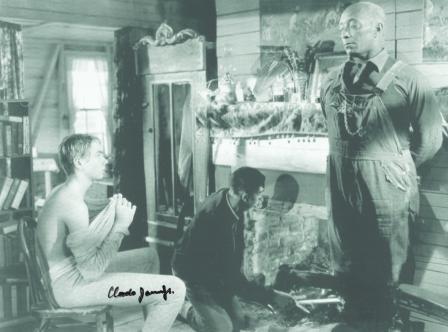#Claude Jarman Jr
Text
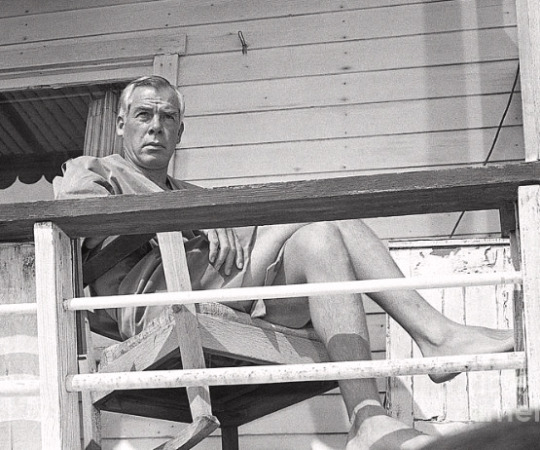
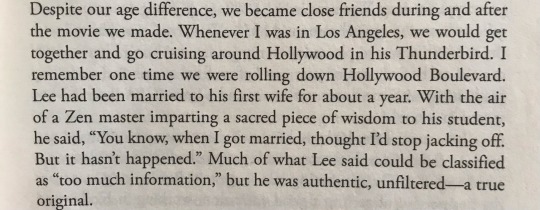
Lee Marvin: Still Jacking Off.
45 notes
·
View notes
Text
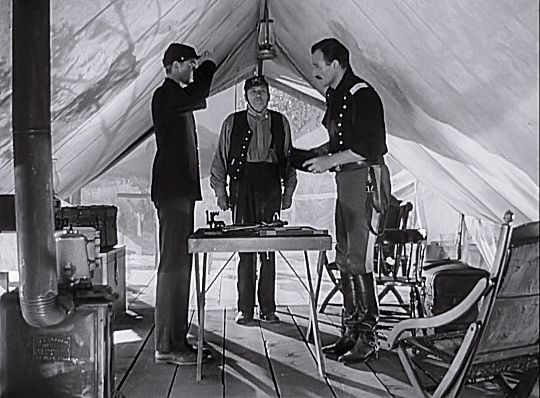
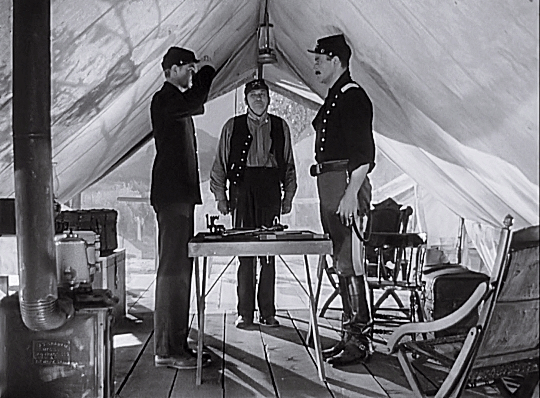




Rio Grande (1950)
dir. John Ford
#Rio Grande#John Wayne#Claude Jarman Jr#Victor McLaglen#1950s#1950#my gifs#userthing#userstream#cinemapix#cinematv#cinemaspast#filmtvcentral#tvfilmspot#filmedit#motionpicturesource#uservintage#classicfilmcentral#classicfilmblr#blackandwhiteedit#John Ford
9 notes
·
View notes
Text

Juano Hernandez with Claude Jarman, Jr. in Clarence Brown’s INTRUDER IN THE DUST (1949)
22 notes
·
View notes
Text

Claude Jarman Jr.-Gloria Grahame "Sin contemplaciones" (Roughshod) 1949, de Mark Robson.
10 notes
·
View notes
Text
Clarence Brown Film Festival in Knoxville, Tenn.: Aug. 16-20
A film festival celebrating the career of director Clarence Brown begins this evening, Wednesday, Aug. 16, and runs through Sunday, Aug. 20, in Knoxville, Tenn.
Director Clarence Brown
Hosted by the Knox County Public Library, the Clarence Brown Film Festival will feature film screenings and presentations from speakers including Brown’s biographer Gwenda Young, film critic and historian Farran…
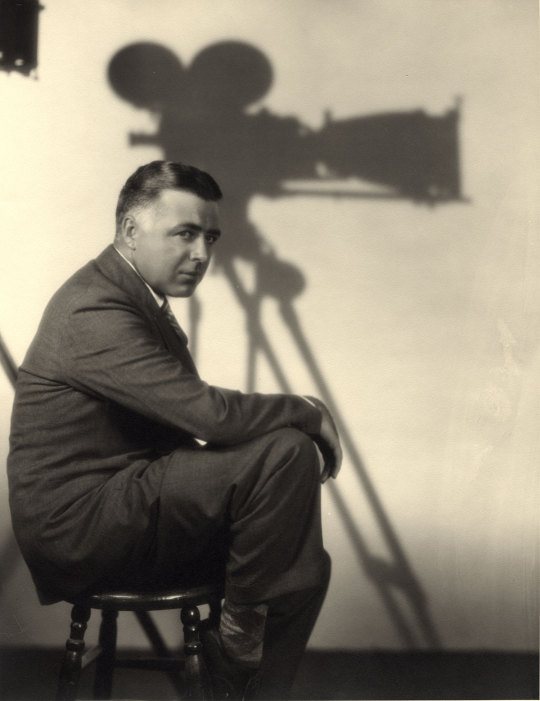
View On WordPress
#Clarence Brown#Clarence Brown Film Festival#Claude Jarman#Claude Jarman Jr.#Director Clarence Brown#film festivals
1 note
·
View note
Text
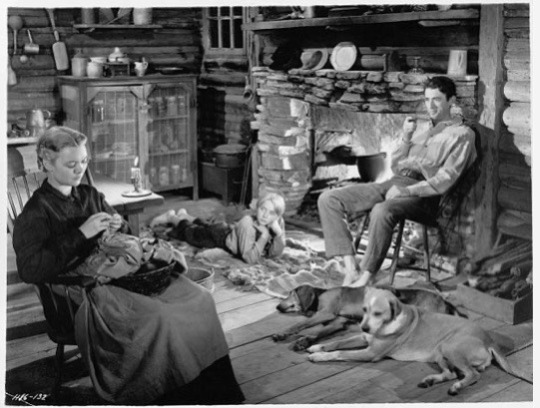
Jane Wyman with Gregory Peck and Claude Jarman Jr in The Yearling (1946).
8 notes
·
View notes
Photo

Juano Hernandez and David Brian in Intruder in the Dust (Clarence Brown, 1949)
Cast: David Brian, Claude Jarman Jr., Juano Hernandez, Porter Hall, Elizabeth Patterson, Charles Kemper, Will Geer, David Clarke, Elzie Emanuel. Screenplay: Ben Maddow, based on a novel by William Faulkner. Cinematography: Robert Surtees. Art direction: Randall Duell. Film editing: Robert Kern. Music: Adolph Deutsch.
Clarence Brown's Intruder in the Dust, shot on location in Oxford, Mississippi, Williiam Faulkner's home town, is better than the Faulkner novel on which it's based. Critics have complained about the prolix self-righteousness of the speeches by Gavin Stevens (David Brian), but they're mercifully kept to a minimum in the film whereas they go on for pages in the book. The chief flaw of both film and book may be that neither Faulkner nor screenwriter Ben Maddow could decide whether they wanted a whodunit wrapped in a fable about racism, or a story about racism that incidentally contains a murder mystery. I think the film is partly rescued from this problem by Robert Surtees's mastery of black-and-white cinematography, which brings a film noir quality to the movie, especially in the scenes shot in the old Lafayette County Jail, where a single bare light bulb often apparently lights the shabby surroundings. And while the midnight digging up of Vinson Gowrie's grave by two teenagers and an elderly woman is one of the more improbable twists of the plot, Surtees's camera and lighting give at least an illusion of plausibility while also evoking horror movie chills. (One thing I particularly like about this scene is that Aleck, the Black teenager played by Elzie Emanuel, isn't put through the usual degrading movie jokes about Blacks afraid of graveyards. He goes along with the plan gamely, but also gets a good laugh line later when the sheriff asks Chick and Aleck what they would have done if there had been a body in the grave. "I hadn't thought about it," Chick says, probably lying to brave it out. "Uh, I did," Aleck says, quite sensibly.) The film works, too, because it's a movie without stars, therefore without the baggage of familiar personae that established movie actors bring to roles. David Brian is the nominal lead, but this was his first year in movies, so his relative unfamiliarity prevents him from overshadowing the film's real star, Juano Hernandez as the stubborn, proud Lucas Beauchamp, a brilliant performance that deserved one of the several Oscar nominations that the film failed to get. Claude Jarman Jr. had made his debut at the age of 12 as Jody in Brown's The Yearling (1946), for which he won the special Oscar once designated for juvenile actors, but like Brian, he never became a big star. The film is really carried by two stellar character players, Porter Hall as Nub Gowrie and Elizabeth Patterson as Miss Habersham, and, I think, by the citizens of Oxford and Lafayette County rounded up for the crowd scenes and a few incidental small roles. It's a film of control and texture that deserves to be better known than it seems to be.
0 notes
Text
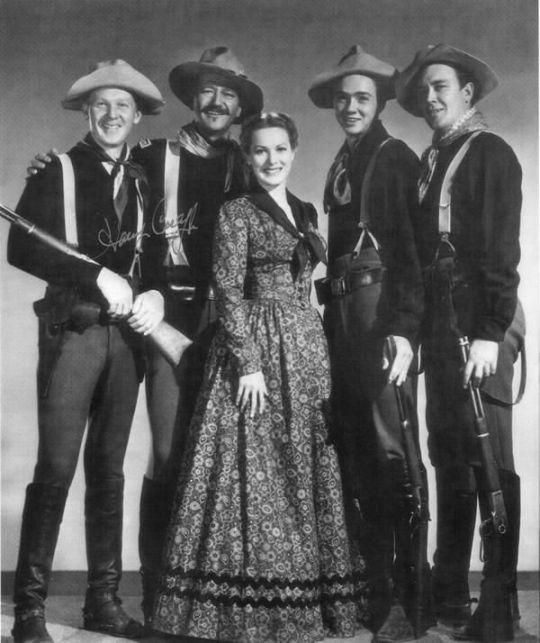
Harry Carey Jr, John Wayne, Maureen O'Hara, Claude Jarman Jr, and Ben Johnson in a publicity still for Rio Grande (1950). This is Maureen's second honorable mention, after Miracle on 34th Street.
23 notes
·
View notes
Text
Child’s Play: The Juvenile Academy Award By Jessica Pickens

It can feel a little awkward when a child is told they did a better job at work than an adult. That was the case with the Academy Awards at least. At 9 years old, Jackie Cooper was the first child nominated for a Best Actor at the 4th Annual Academy Awards. Nominated for SKIPPY (’31), Cooper was competing against Richard Dix, Fredric March, Adolphe Menjou and Lionel Barrymore. It was Barrymore who took home the award that night for his performance in A FREE SOUL (‘31).
Three years later, 6-year-old Shirley Temple looked like a serious contender for a Best Actress nomination at the 7th Academy Awards. This same year, there was heartburn that Bette Davis hadn’t received an official nomination for OF HUMAN BONDAGE (’34). As a compromise, Temple’s autobiography notes that a special Juvenile Academy Award was created, “In grateful recognition of her outstanding contribution to screen entertainment during the year 1934.” Claudette Colbert took home the Best Actress award that year for IT HAPPENED ONE NIGHT.
The juvenile statue awarded to the young actors was half the size of the regular Academy Award; standing about seven inches tall. Temple was the first to receive an award that was presented 10 times to 12 honorees over the next 26 years. The juveniles ranged in ages 6 to 18.
Shirley Temple, 1934 at the 7th Annual Academy Awards
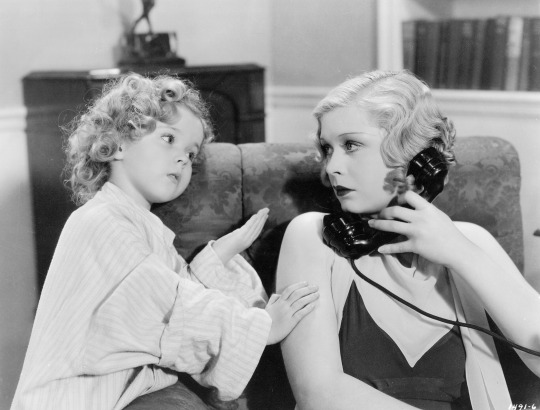
As Temple sat bored at the Academy Awards, she was surprised to hear her name announced during the ceremony. Host and humorist Irvin S. Cobb called her “one giant among the troupers.” As she grabbed her miniature-sized award, she asked, “Mommy may we go home now?” according to her autobiography. “You all aren’t old enough to know what all this is about,” Cobb told Temple. Shirley’s mother told her that she received the award for “quantity, not quality,” because Temple starred in seven films in 1934.
In 1985, Temple received a full-sized award, as she felt the juvenile actors deserved a regulation-sized award like everyone else, according to Claude Jarman, Jr.’s autobiography.
Mickey Rooney and Deanna Durbin, 1938 at the 11th Annual Academy Awards:
The second time the special award was presented was to two juvenile actors: Mickey Rooney, 18, and Deanna Durbin, 17. They received the award for “their significant contribution in bringing to the screen the spirit and personification of youth and as juvenile players setting a high standard of ability and achievement.”
“Whatever that meant,” Rooney commented in his autobiography on the award.
This was Durbin’s only recognition from the Academy. The following year, Rooney received his first adult nomination for BABES IN ARMS (’39). In total, he received four other competitive awards as an adult, and received one Honorary Award in 1983 in recognition of “50 years of versatility in a variety of memorable film performances.”
Judy Garland, 1939 at the 12th Annual Academy Awards:
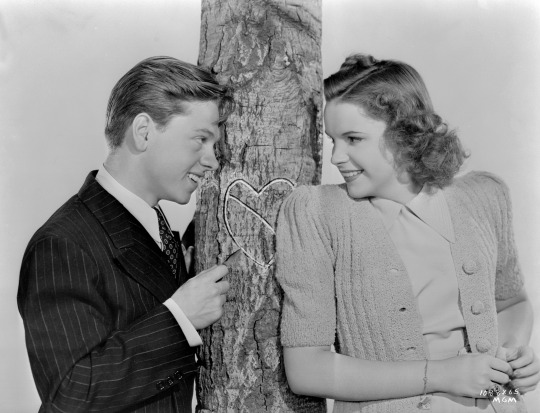
Judy Garland, 17, was presented her Juvenile Academy Award by her frequent co-star Mickey Rooney. Garland received her award for “her outstanding performance as a screen juvenile during the past year” for her performances in BABES IN ARMS (’39) and THE WIZARD OF OZ (’39). Garland wouldn’t be recognized with a nomination by the Academy again until her 1954 performance in A STAR IS BORN. Garland reported losing the Juvenile Award in 1958, and it was replaced by the Academy at her own expense.
Margaret O’Brien, 1944 at the 17th Annual Academy Awards
Margaret O’Brien, 7, received the Juvenile Academy Award “for outstanding child actress of 1944” for the film MEET ME IN ST. LOUIS (’44). When Margaret O’Brien received her Oscar, she said she wasn’t really that interested in it at the time. “I was more excited about seeing Bob Hope. I was more interested in meeting him than the Oscar that night,” she said, quoted by her biographer.
In 1958, O’Brien’s award was lost. Her housekeeper, Gladys, took the Juvenile Academy Award home to polish and didn’t return. A short time after, Gladys was put in the hospital for a heart condition and the award was forgotten. When Margaret reached out later about the award, the maid had moved, according to her biographer.
Nearly 40 years later, two baseball memorabilia collectors — Steve Meimand and Mark Nash— returned the award to O’Brien in 1995. The men had bought it at a swap meet in Pasadena, according to a Feb. 9, 1995, news brief in the Lodi New-Sentinel. “I never thought it would be returned,” she said in 1995. “I had looked for it for so many years in the same type of places where it was found.” In 2001, O’Brien donated her Oscar to the Sacramento AIDS Foundation.
Peggy Ann Garner, 1945 at the 18th Annual Academy Awards

After appearing in films since 1938, Peggy Ann Garner’s breakout role was in the film adaptation of A TREE GROWS IN BROOKLYN (’45). That year at the Academy Awards, 14-year-old Garner was recognized with the Juvenile Award “for the outstanding child actress of 1945.” It was an unexpected honor for Garner, who was confused why she was asked to sit in an aisle seat. She thought it was a mistake when her name was announced, according to Dickie Moore’s book on child actors.
Claude Jarman Jr., 1946 at the 19th Annual Academy Awards
Claude Jarman Jr. was plucked from his home in Knoxville, Tenn. and thrust into stardom when director Clarence Brown selected him for the lead role in THE YEARLING (’46). Jarman wrote in his autobiography that he gave a brief speech saying it was a thrilling moment and “This is about the most exciting thing that can happen to anybody.” However, later admitted that at age 12 the significance of the award escaped him. Following Shirley Temple’s example, Jarman also later received a full-sized Academy Award.
Ivan Jandl, 1948 at the 21st Annual Academy Awards

Ivan Jandl received the Juvenile Academy Award in his only American film, making him the first Czech actor to receive an Academy Award. At age 12, Jandl was recognized for his “outstanding juvenile performance of 1948 in THE SEARCH (’48).” The film was one of only five films Jandl starred in. Jandl was not permitted by the Czechoslovakia government to travel to the United States to accept his award, which was accepted on his behalf by Fred Zinnemann, who directed THE SEARCH.
Bobby Driscoll, 1949 at the 22nd Annual Academy Awards
Bobby Driscoll received the award for “the outstanding juvenile actor of 1949” after appearing in the film-noir THE WINDOW (’49), as well as his performance in the Disney film SO DEAR TO MY HEART (’48). “I’ve never been so thrilled in my life,” 13-year-old Driscoll said when he accepted the award.
Jon Whiteley and Vincent Winter, 1954 at the 27th Annual Academy Awards
Scottish actors Jon Whiteley, 10, and Vincent Winter, 7, co-starred as brothers in THE LITTLE KIDNAPPERS (’53). The co-stars were awarded for their “outstanding juvenile performances in The Little Kidnappers.” Whiteley’s parents wouldn’t let him attend the award’s ceremony, so it was mailed to him. "I remember when it arrived, hearing it was supposed to be something special, I opened the box and I was very disappointed. I thought it was an ugly statue," Whiteley said in a 2014 interview.
Vincent Winter was also not present for the award, so Tommy Rettig accepted the award on behalf of both actors.
Hayley Mills, 1960 at the 33rd Annual Academy Awards

The last Juvenile Academy Award was award to Hayley Mills, 14, in 1960 for her role in POLLYANNA (’60). The award was presented by the first winner of the Juvenile Award, Shirley Temple. Mills was unable to attend, and it was accepted on her behalf by fellow Disney star Annette Funicello.
In a 2018 interview, Mills said she didn’t know she had received it until it arrived at her home. Mills was in boarding school in England at the time of the ceremony. “I didn’t know anything about it until it turned up. Like, ‘Oh, that’s sweet. What’s that?’ I was told, ‘Well, this is a very special award,’ but it was quite a few years before I began to appreciate what I had,” she said in a 2018 interview.
The Aftermath
Throughout the tenure of the honorary Juvenile Academy Award, other children were still occasionally nominated, including Bonita Granville, 14, for THESE THREE (’36); Brandon de Wilde, 11, for SHANE (’53); Sal Mineo, 17, for REBEL WITHOUT A CAUSE (’55) and Patty McCormack, 11, for THE BAD SEED (’56).
Once Patty Duke, 16, won the Academy Award for Best Actress in a Supporting Role in 1963 for THE MIRACLE WORKER (’62), the honor was discontinued. Following Duke, Tatum O’Neal, 11, received the award for Best Supporting Actress for PAPER MOON (’73).
In recent years, there has been discussion about bringing the award back. In a 2017 Hollywood Reporter article, the argument was made that after the discontinuation of the award, fewer children have been recognized by the Academy. The performance of Sunny Pawar in LION (2016) wasn’t nominated, which was viewed as a snub, according to a 2017 Hollywood Reporter article. Other children haven been nominated in major categories, like Quvenzhane Wallis for BEASTS OF THE SOUTHERN WILD (2012), which to date makes her the youngest nominee for Best Actress in a Leading Role, and Jacob Tremblay in ROOM (2015). But the last time a child has won a competitive award was Anna Paquin for THE PIANO (1993).
#child actors#juveniles#Academy Awards#Oscars#child awards#Academy history#film history#Shirley Temple#Mickey Rooney#Judy Garland#Claude Jarman Jr#TCM#Turner Classic Movies#Jessica Pickens
118 notes
·
View notes
Video
youtube
Oh yes, I finally found it in glorious black and white (I hate colorization!).
Good Lord, what a movie. I had two hours of pure joy, it just checked all the boxes for me. The writing is amazing - how often do we get to see two parents trying really hard not to mess up their kid and doing the right thing despite their own instinctive impulses? The acting is superb - Duke is especially good here with his fatherly struggle; Victor McLaglen as “a chowderheaded mick sergeant” is hilarious; young Ben Johnson is cheeky and hot (and he does that crazy Roman riding himself, OMG); Claude Jarman Jr. is still the same wide-eyed sweet baby boy that he was in “The Yearling”, and it makes his character’s determination even more endearing; even the little girl with ear-piercing voice is adorable (I was afraid she’d get shot in the church, but they never hurt children in the old movies). The music - the uplifting score by Victor Young and absolutely fantastic, angelical singing of ‘Sons of The Pioneers’. And did I mention that freaking Roman riding - doing jumping Roman style without stunt doubles, goodness gracious, I gotta make another post just about that.
One more, just because I can’t get enough of Ken Curtis’ voice. <3
youtube
#rio grande#1950#john ford#john wayne#maureen o'hara#ben johnson#victor mclaglen#claude jarman jr#sons of the pioneers#ken curtis#western#old movies#old hollywood#classic movies
5 notes
·
View notes
Text
Hangman's Knot 1952

#hangmans knot#randolph scott#claude jarman jr#donna reed#richard denning#frank faylen#glenn langan#lee marvin#jeanette nolan#clem bevans#ray teal#guinn big boy williams#monte blue#john call#edward earle#frank hagney#reed howes#post park#frank yaconelli#westerns#western movies#western#westernmovies#western movie
13 notes
·
View notes
Text

(Caption) Claude Jarman Jr. (right) accepted the Academy Juvenile Award Oscar for "The Yearling" from past winner Shirley Temple at the Academy Awards at the Shrine Auditorium in Los Angeles in 1947. At left is Best Supporting Actor winner Harold Russell ("The Best Years of Our Lives").
16 notes
·
View notes
Photo


Rio Grande (1950)
I didn’t like this movie one bit. Seriously when John Wayne gets an arrow in the chest toward the end of the film I said out loud ‘Thank God’. Then he didn’t even die because stupid John Ford didn’t let his leading men get killed.
And I kept thinking of the horses and what it took to get those shots and I found the film to be a real bummer.
Hard Pass.
#rio grande#john wayne#john ford#maureen o'hara#claude jarman jr#harry carey jr#ben johnson#1950#1950cinema#70-year-old-movies
0 notes
Photo

intruder in the dust (1949)
0 notes
Text
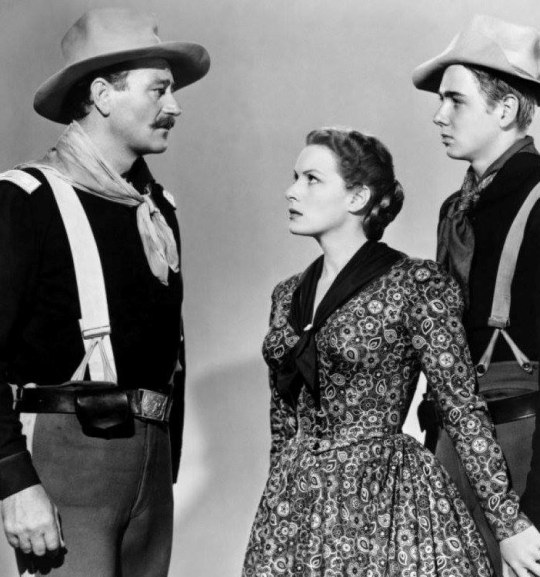
John Wayne-Maureen O´Hara-Claude Jarman Jr. "Rio Grande" 1950, de John Ford.
36 notes
·
View notes
